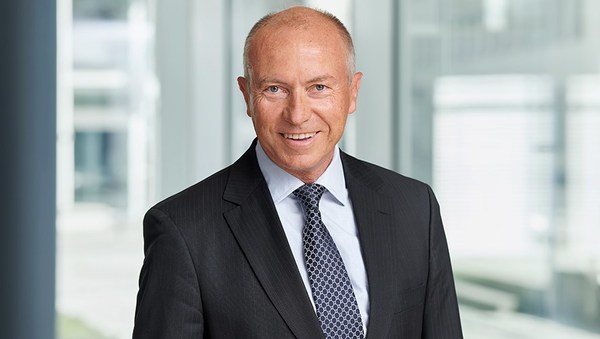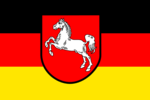News Release from Statkraft AS
Wind Industry Profile of
Europe 2021 – The future of the European energy transition
On 4 February 2021, Statkraft CEO Christian Rynning-Tønnesen took part in a panel discussion on “The Future of the European Energy Transition” at the Europe 2021 event in Germany. The other panellists included Kristina Haverkamp, Managing Director of dena, Dr Brigitte Knopf, Secretary General of the Mercator Research Institute on Global Commons and Climate Change and Andreas Schierenbeck, CEO of Uniper.
Christian Rynning-Tønnesen’s messages are clear:
- An energy system based entirely on renewables is possible. In markets where hydropower is dominant, this can theoretically be up to 100 % implemented by 2050 with today’s technologies. In markets with less hydropower, this could still be implemented up to 80–90 %.
- Within the next generation, every energy system worldwide can achieve an energy mix that consists of 100 % renewable energies.
We are in the midst of a tremendous change. The scale is comparable with the transition from the typewriter to the computer. We are passing from a world predominantly characterised by fossil fuels to an energy system consisting mainly of renewable energies. It is quite possible that by 2050, renewable energies will make up 80 % of the total power supply – 66 % of it from wind and solar alone.
Statkraft is taking a look into the future in the Low Emissions Scenario; on what the world might look like in 2050 if the rapid development of renewable technologies continues.
The global energy sector will grow to three times its current size by 2050 - and it will be possible to cover all this and even more by renewable energies. As such, by 2035, solar energy will be the largest energy source worldwide.
Renewables overtook fossil fuels in the EU electricity mix for the first time in 2020. This trend is set to continue over the next few years. The demand for coal will peak before 2025 with the demand for oil following five to seven years later. The demand for natural gas will have reached its peak in 2050.

Statkraft CEO Christian Rynning-Tønnesen (Image: Statkraft)
Climate change and the pandemic
Renewable energies have proven themselves to be very resilient during the coronavirus pandemic. Unlike the global economy, which has been severely damaged by the pandemic, renewable energies have continued to grow. In fact, 2020 was a record-breaking year. More than 130 GW of additional solar and 70 GW of wind power (onshore and offshore) was produced worldwide.
By way of comparison: The total installed power generation capacity in Germany is around 222 GW across all energy sources. The net expansion of renewable power capacity in 2020 was almost 4 % higher than in the previous year. This means that the pace of the global energy transition even increased in 2020 – despite the global economic crisis.
Global energy transition investments (renewable energy, electrified transport, electrified heat, energy storage, hydrogen and CCS) grew to 501?billion US dollars in 2020, compared to 30 billion US dollars in 2004.
In Europe, renewable energies overtook fossil fuels in the EU’s energy mix for the first time in 2020 (38 % renewable energies versus 37 % fossil fuels). Coal-fired power generation in the EU has decreased by 20 % in the last year and has even halved since 2015.
Politics is stirring
The commitments made by politicians last year are further bolstering renewable energies. The EU’s 750-billion-euro green stimulus package, “Next Generation EU”, places the “Green Deal” and green investments at its core. Around 37 % of the stimulus package is to be invested in the goals of the Green Deal, including the “lighthouse projects”: hydrogen, green building and one million electric charging points. Germany’s coronavirus stimulus package also provides 9 billion euro for hydrogen and 8 billion euro for the further expansion of electromobility.
By the start of 2021, countries representing more than 65 % of global carbon dioxide emissions and more than 70 % of the global economy, had set some ambitious targets:
- EU: European Green Deal and net zero by 2050
- China: Carbon neutrality by 2060; launch of a national emissions trading system in February 2021
- Japan and South Korea: Net zero by 2050
- United Kingdom: A decrease of at least 68 % in greenhouse gas emissions by 2030 (compared with 1990)
- Norway: Government launched climate plan that has set Norway on the path to meet its 2030 climate targets
- USA: Joe Biden has signed the Paris Climate Agreement and is promoting 100 % clean energy and net zero by 2050
What about Germany?
The proportion of renewable energies in Germany’s energy mix was higher than ever in 2020. Renewable energies accounted for 45 % of gross power generation, 5 % more than in the previous year. The proportion of coal-fired power plants in power generation decreased to the same extent – from 29 to 24 %.
Germany’s last nuclear power plant will be decommissioned in 2022 and coal-fired power plants will be shut down by 2038 at the latest. The increasing proportion of renewable energies demands greater flexibility from the energy system. However, there are not yet sufficient storage solutions in place and hydropower has not been made adequately flexible in Germany to compensate for this. In the transition phase, flexible gas-fired power plants add needed flexibility and facilitate the transformation towards an energy system based 100 % on renewable energy.
We are on the right path and Statkraft is part of this transition. We are driving forward the expansion of renewable energies. We have been developing, building and operating solar-, wind- and hydropower plants for 125 years. With our hydropower fleet and our in-depth market knowledge we can provide the necessary flexibility to the power system.
Statkraft is ready and well positioned for capturing values in the new energy landscape. 100% of our investments go into renewables.
- Source:
- Statkraft
- Author:
- Press Office
- Link:
- www.statkraft.com/...
- Keywords:
- Statkraft, CEO, panel discussion, energy transition, Germany, future, Europe, climate target, energy storage, pandemic, energy system, market, hydrogen


























